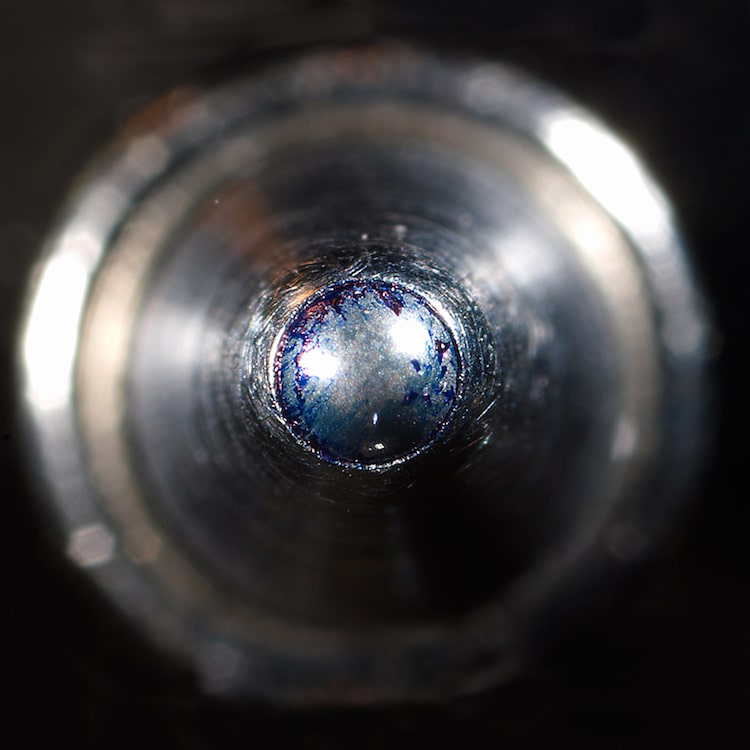
Tip of a ballpoint pen (Photo: Ragnar Jensen via Wikimedia Commons, CC BY-SA 2.0)
Today, there are many different ways of writing in ink. However, the most popular and prevalent instrument is the ballpoint pen. Its modern design channels thick, oil-based ink through a steel tip that “rolls” over the writing surface.
So, how did the ballpoint pen come to be? Well, its invention did not happen overnight. After American John J. Loud patented the first design for a ballpoint in 1888 and failed to find the desired results, others made patents for slightly different designs—but none of them were successful. It was not until Hungarian-Argentinian László Bíró made a ballpoint pen using the same ink as newspapers that it found commercial success.
Here, we will learn more about the history of the ballpoint pen.
How a Ballpoint Pen Works

Close-up of the ball in a ballpoint pen moving over paper, 2020 (Photo: Keerthi via Wikimedia Commons, CC BY-SA 4.0)
A ballpoint pen is a type of pen that features a metal ball at the tip that helps distribute a thick, paste-like ink by rolling over the surface. Available in both disposable and refillable models, this utensil is widely used around the world and is a popular drawing medium for artists, too.
Who Invented the Ballpoint Pen?
First Ballpoint Pen Patent
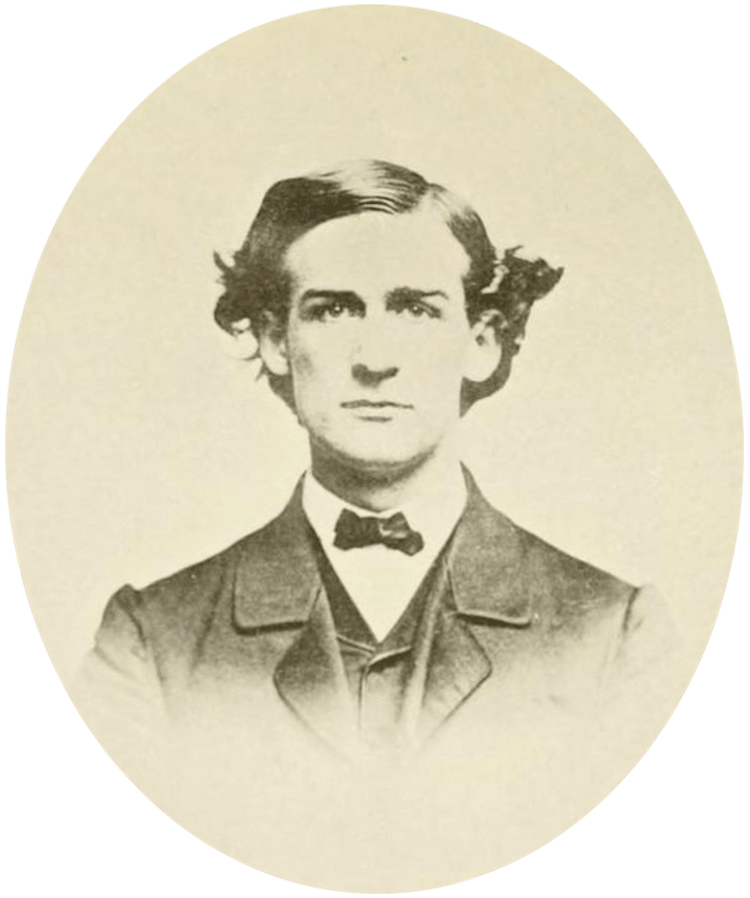
Photo of John J. Loud at Harvard College, c. 1866 (Photo: Wikimedia Commons, Public domain)
Prior to the invention of the ballpoint, dip and fountain pens were the most common methods of writing in ink. However, both of these instruments have a slow drying time, so inventors sought a tool that would correct this problem.
American John J. Loud made and obtained the first patent for a ballpoint pen in 1888. His goal was to create a pen that could be used on rough surfaces. It used steel, rotating ball at the tip. However, its application was limited, so he let the patent expire.
First Commercially Successful Ballpoint Pen
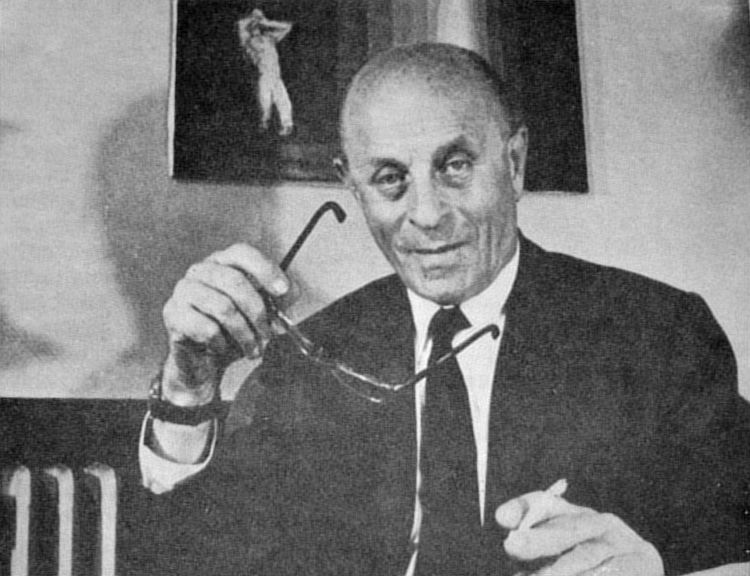
Photo of László Bíró, c. 1978 (Photo: Wikimedia Commons, Public domain)
Over 20 years after Loud’s death, Hungarian newspaper editor László Bíró made his own version of the ballpoint pen. In his model, Bíró incorporated a newspaper-like ink (invented by his brother György Bíró), which was thicker than the ink normally used in pens of this time. It was then dispersed through the rotating ball mechanism. This resulted in a pen that could write smudge-free and with little drying time.
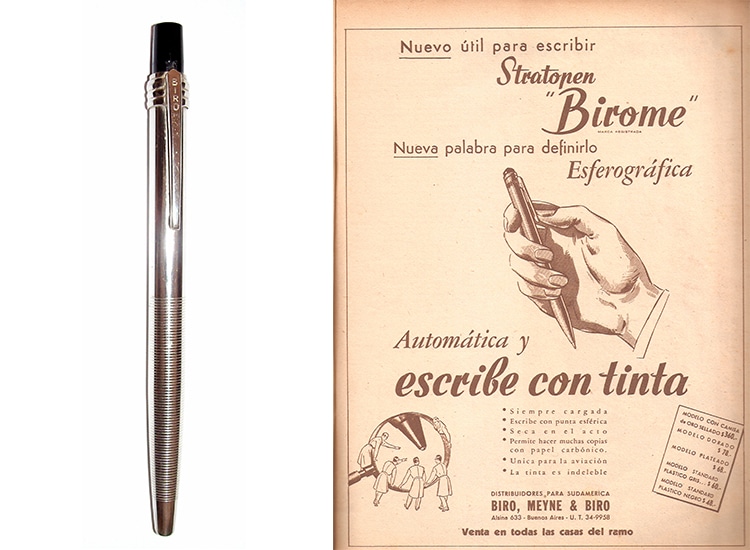
Right: First model of the “Birome” pen (Photo: Roberto Fiadone and Daniel Schwen via Wikimedia Commons, CC BY-SA 2.5)
Left: Advertisement of the “Birome” in an Argentinian magazine “Leoplán,” 1945 (Photo: Wikimedia Commons, CC BY-SA 2.5)
In the 1940s, the Bíró brothers and their friend Juan Jorge Meyne fled the Nazis and relocated to Argentina, where they obtained a new patent for their pen design. This new model was called the Birome, a reference to the surnames Bíró and Meyne. In fact, the ballpoint pen is still called a “Bíró” in many countries around the world.
Later Ballpoint Pen Brands
The Birome pen’s success was limited to Argentina until the American companies Eversharp Co. and Eberhard Faber Co. acquired the rights to sell Biromes in the U.S. Afterward, more ballpoint pen brands began to crop up, many of which are still well-known today.
Both the French brand Bic and American brand Paper Mate pens emerged during the 1950s as leading ballpoint pen manufacturers.
Ballpoint Pen Artwork
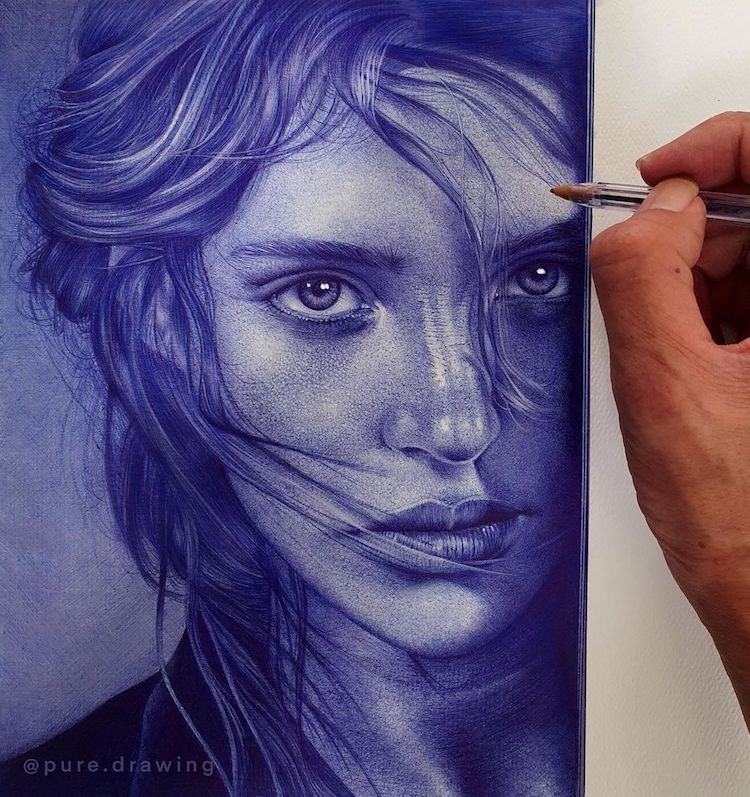
Photo: Paulus Architect
Not only have ballpoint pens become a staple in nearly all writing situations, but they’ve also become a popular drawing utensil. Due to their affordability and ease of use, artists—particularly those who draw—gravitate towards its innumerable possibilities. By moving the pen gently back and forth over the paper, artists are able to render realistic textures like skin and hair with a ballpoint.
However, due to the ink’s sensitivity to light, drawings and other art created with ballpoint face certain longevity issues. If you’re interested in drawing with ballpoint pen, make sure you keep this fact in mind.

Photo: Patrick Onyekwere
Related Articles:
Unearth the Colorful History of Paint: From Natural Pigments to Synthetic Hues
The History of the Color Blue: From Ancient Egypt to the Latest Scientific Discoveries
Cyanotype: The Photographic Process That “Blue” Everyone Away 170 Years Ago
All Aboard for the History of the Grand Central Terminal, an Iconic NYC Landmark
